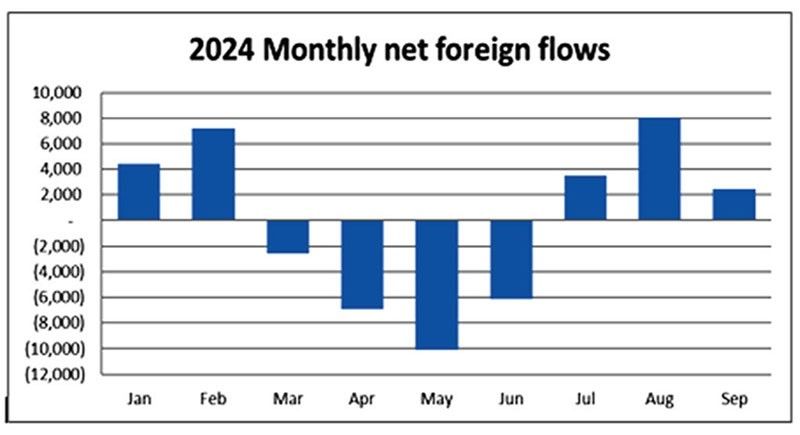It's too late

“And it’s too late, baby, now it’s too late. Though we really did try to make it. Something inside has died. And I can’t hide, and I just can’t fake it.”
These famous lines from Carole King’s timeless song may strike a chord with the Federal Reserve as it shifts toward policy easing. After years of trying to bring inflation under control and achieve a soft-landing, the Fed is once again confronted with a familiar dilemma: Is it too late in cutting its policy rates to avert a recession?
Too late again?
The Fed was in a similar “too-late” position in 2022. Ongoing debate whether inflation was transitory or persistent led to delays in raising interest rates. By June 2022, inflation surged to 9.1 percent, its highest level in four decades. As a result, the Fed was forced to implement aggressive rate hikes, a decision some analysts believe could have been avoided with earlier action.
Weak job growth raises alarms
The US jobs report, announced on Sept. 6, has added to market concerns. In the last three months, the private sector has averaged only 96,000 new jobs per month—a pace not seen since the summer of 2007, just before the global financial crisis. This slowing pace of job growth shows underlying weaknesses in the economy.
The report spooked investors as it reignited fears that the Fed may be late once again in adjusting its monetary policy. This caused the S&P 500 to fall 4.1 percent and the Nasdaq 100 to drop 5.8 percent in the first week of September.
Fed’s dilemma: 25 or 50 bps cut?
A 25-bps cut may seem like a cautious approach, but markets are already wary that it may not be enough. Investors, remembering the Fed’s delayed response in 2022, worry that it’s too little too late to avoid a severe downturn.
On the other hand, a 50-bps cut would show that the Fed recognizes a worse situation. While such a move would significantly lower borrowing costs and boost consumer confidence, it risks sending a different message. Markets could interpret a large cut as a sign that the Fed anticipates a possible recession which may result in panic and volatility in the markets.
Emerging opportunities outside the US
While the Fed struggles with its policy dilemma, global investors are increasingly looking elsewhere for growth. In recent months, we’ve seen capital flows shifting from the US to other regions, particularly to emerging markets, as part of the rotation and broadening. Investors are now finding opportunities in regions that have been overlooked like ASEAN, and one of the key beneficiaries is the Philippines.
Philippines: Back on the radar
International investors have mostly ignored the Philippines during the past decade. But now, things are changing. A broadening of capital flows is bringing renewed attention to the country. Although the initial flows are modest, they reflect growing confidence in the Philippines’ prospects.

Slowing US economy
A slowing US economy would necessitate lower interest rates. This will potentially widen the interest rate differential between the Philippines and US. This differential—the gap between rates in two countries—makes Philippine assets more attractive to investors seeking higher returns.
This is good news for the Philippine stock market and the peso. Last Friday, the Philippine Stock Exchange Index (PSEi) closed at 7,022, marking its first weekly close above the 7,000-level since February 2023. The PSEi has increased by 12 percent since June, while the peso has strengthened by five percent since July, closing at 55.995 last Friday.
Better to be disliked than ignored
Being disliked is one thing, but as the saying goes, it’s better to be disliked than ignored. After years of flying under the radar, the Philippines is now drawing interest from investors seeking opportunities beyond the US. With its potential for growth, stable fundamentals and improving market sentiment, the Philippines is well-positioned to absorb some of the capital moving away from more mature markets.
After years of neglect, simply being back on the radar is a victory in itself.
Philequity Management is the fund manager of the leading mutual funds in the Philippines. Visit www.philequity.net to learn more about Philequity’s managed funds or to view previous articles. For inquiries or to send feedback, please call (02) 8250-8700 or email [email protected].
- Latest
- Trending





























